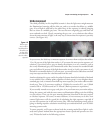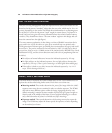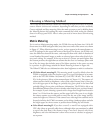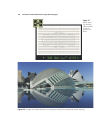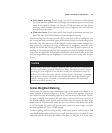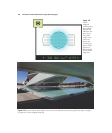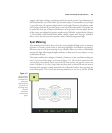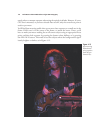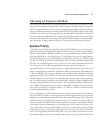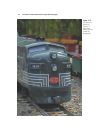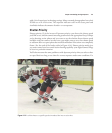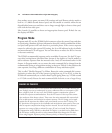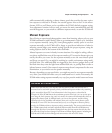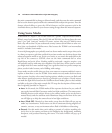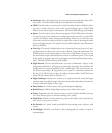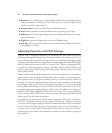
Choosing an Exposure Method
You’ll find four methods for choosing the appropriate shutter speed and aperture, when
using the semi-automatic/manual modes. (Scene modes, which use their own exposure
biases, are described next.) You can choose among Program, Aperture-priority, Shutter-
priority, or Manual options by rotating the mode dial on top of the camera. Your choice
of which is best for a given shooting situation will depend on things like your need for
lots of (or less) depth-of-field, a desire to freeze action or allow motion blur, or how much
noise you find acceptable in an image. Each of the D7000’s exposure methods empha-
sizes one aspect of image capture or another. This section introduces you to all four.
Aperture-Priority
In A mode, you specify the lens opening used, and the D7000 selects the shutter speed.
Aperture-priority is especially good when you want to use a particular lens opening to
achieve a desired effect. Perhaps you’d like to use the smallest f/stop possible to maxi-
mize depth-of-field in a close-up picture. Or, you might want to use a large f/stop to
throw everything except your main subject out of focus, as in Figure 4.13. Maybe you’d
just like to “lock in” a particular f/stop because it’s the sharpest available aperture with
that lens. Or, you might prefer to use, say, f/2.8 on a lens with a maximum aperture of
f/1.4, because you want the best compromise between speed and sharpness.
Aperture-priority can even be used to specify a range of shutter speeds you want to use
under varying lighting conditions, which seems almost contradictory. But think about
it. You’re shooting a soccer game outdoors with a telephoto lens and want a relatively
high shutter speed, but you don’t care if the speed changes a little should the sun duck
behind a cloud. Set your D7000 to A, and adjust the aperture until a shutter speed of,
say, 1/1,000th second is selected at your current ISO setting. (In bright sunlight at ISO
400, that aperture is likely to be around f/11.) Then, go ahead and shoot, knowing that
your D7000 will maintain that f/11 aperture (for sufficient DOF as the soccer players
move about the field), but will drop down to 1/750th or 1/500th second if necessary
should the lighting change a little.
A Lo or Hi indicator in the viewfinder and the top-panel monochrome LCD indicates
that the D7000 is unable to select an appropriate shutter speed at the selected aperture
and that over- and underexposure will occur at the current ISO setting. That’s the major
pitfall of using A: you might select an f/stop that is too small or too large to allow an
optimal exposure with the available shutter speeds. For example, if you choose f/2.8 as
your aperture and the illumination is quite bright (say, at the beach or in snow), even
your camera’s fastest shutter speed might not be able to cut down the amount of light
reaching the sensor to provide the right exposure. Or, if you select f/8 in a dimly lit
room, you might find yourself shooting with a very slow shutter speed that can cause
blurring from subject movement or camera shake. Aperture-priority is best used by those
Chapter 4 ■ Getting the Right Exposure 111



